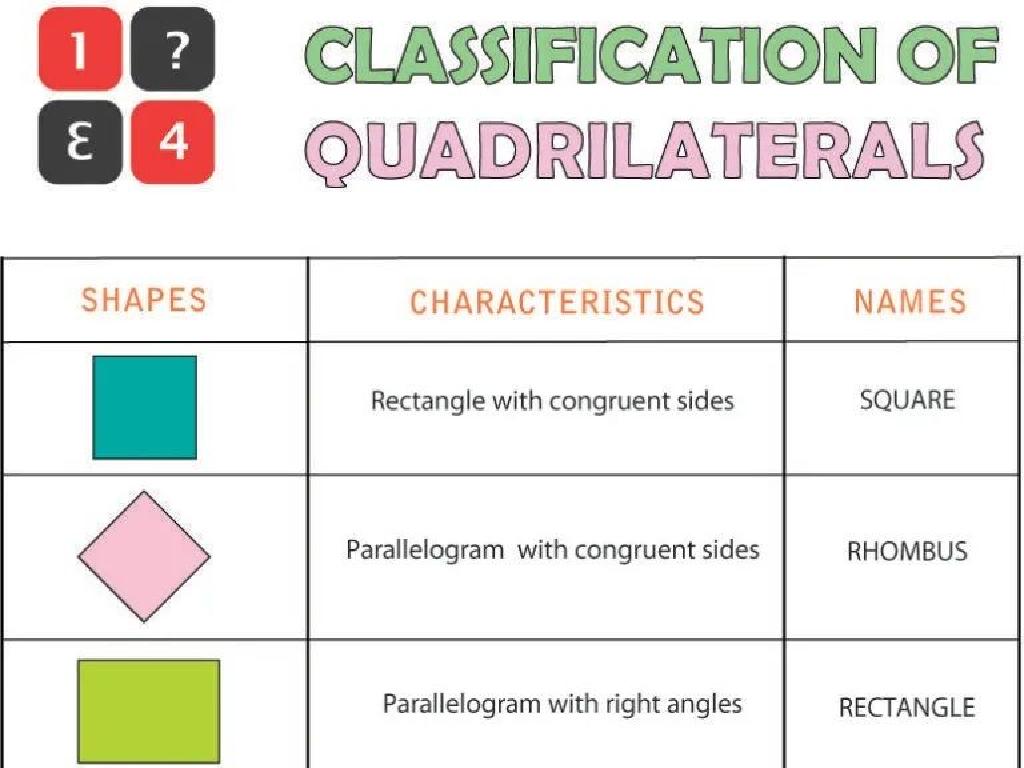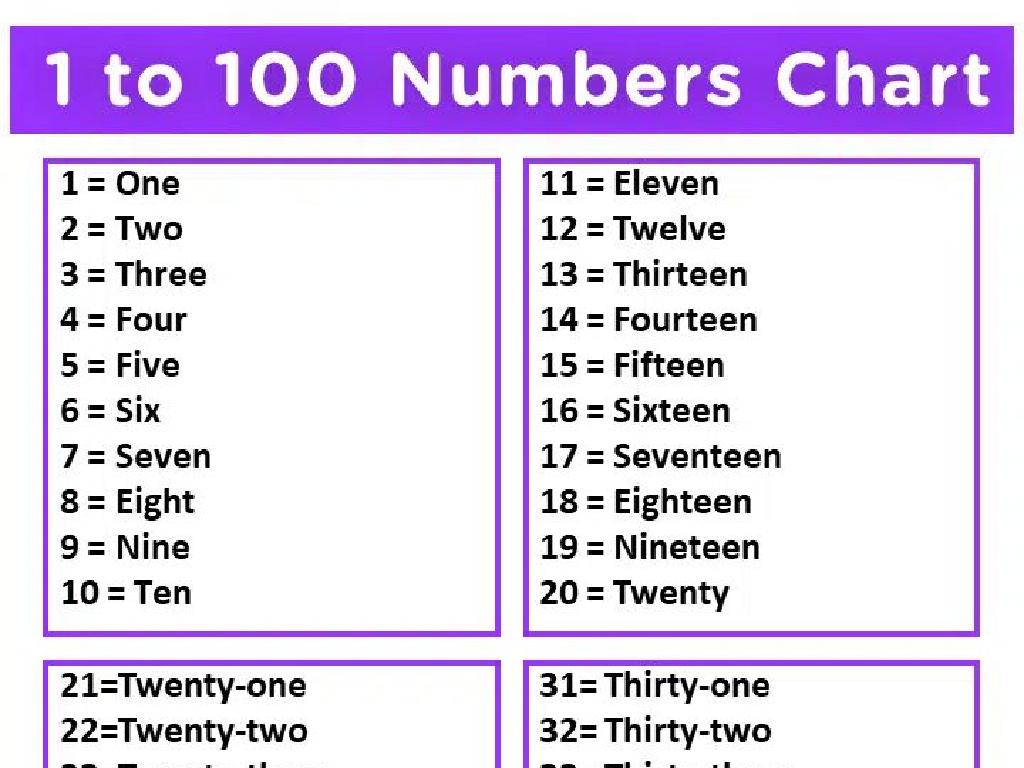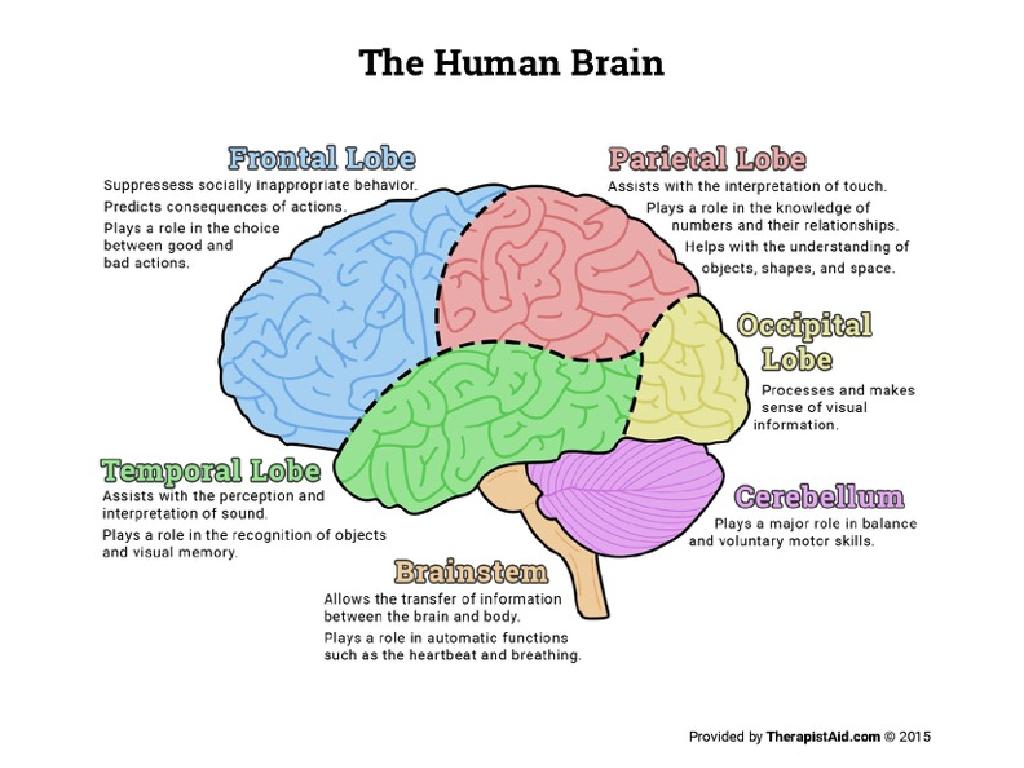Identify Changes In Gravitational Potential Energy
Subject: Science
Grade: Eighth grade
Topic: Kinetic And Potential Energy
Please LOG IN to download the presentation. Access is available to registered users only.
View More Content
Exploring Gravitational Potential Energy
– Recap: Energy fundamentals
– Kinetic vs. Potential Energy
– Kinetic: energy of motion, Potential: stored energy
– Gravitational Potential Energy
– Energy stored due to object’s position above Earth
– Calculating Gravitational Potential Energy
– Use formula: GPE = m * g * h (mass, gravity, height)
|
Begin with a brief recap of what energy is, emphasizing that it’s the ability to do work or cause change. Differentiate between kinetic energy (energy of motion) and potential energy (stored energy). Focus the discussion on gravitational potential energy (GPE), which is the energy held by an object because of its vertical position relative to Earth. Introduce the formula for calculating GPE (mass times gravitational acceleration times height) and explain each component. Provide examples, such as a book on a shelf or a roller coaster at the top of a hill, to illustrate how GPE increases with height. Encourage students to think of other examples where GPE might change.
Exploring Gravitational Potential Energy
– Defining Gravitational Potential Energy
– Energy held by an object because of its position above Earth
– GPE Formula: GPE = mgh
– m represents mass in kg, g is gravity (9.8 m/s^2 on Earth), h is height in meters
– Factors: Mass, Gravity, Height
– More mass or height increases GPE; gravity is constant on Earth’s surface
– Calculating GPE with examples
– Example: What is the GPE of a 10 kg object 5 meters above the ground?
|
Gravitational Potential Energy (GPE) is a type of energy an object possesses due to its position relative to the Earth. The formula GPE = mgh allows us to calculate it, where ‘m’ stands for mass, ‘g’ for the acceleration due to gravity (9.8 m/s^2 on Earth), and ‘h’ for height above the ground. Factors that affect GPE include the object’s mass and height; gravity is a constant on Earth’s surface. To help students understand, provide examples and ask them to calculate GPE for various objects at different heights. This will reinforce the concept and show how GPE changes with mass and height.
Real-life Examples of Gravitational Potential Energy (GPE)
– Roller coasters and GPE
– At the highest point, the coaster has maximum GPE
– Water dams use GPE
– Elevated water has increased GPE, which can be converted to other forms of energy
– GPE varies with height
– As an object’s height increases, so does its GPE
– Practical implications of GPE
|
This slide aims to illustrate the concept of gravitational potential energy (GPE) through tangible examples that students can relate to. Discuss how roller coasters are designed to give a thrilling experience by maximizing GPE at the highest point, which then converts to kinetic energy as the coaster descends. Explain how water dams store water at a height to increase GPE, which can be harnessed for electricity generation. Highlight that GPE is directly related to an object’s height above the ground, meaning the higher the object, the greater the GPE. Use these examples to show the practical applications of GPE in engineering and technology. Encourage students to think of other examples where GPE changes due to height variation.
Calculating Gravitational Potential Energy (GPE)
– GPE Calculation Steps
– GPE = mass (kg) x gravity (9.8 m/s^2) x height (m)
– Example: GPE of a hilltop rock
– If a rock is 5kg and hill is 20m high, GPE = 5 x 9.8 x 20
– Practice: GPE of a book on a shelf
– Find the mass of the book and height of the shelf to calculate
|
This slide introduces students to the concept of gravitational potential energy (GPE) and how to calculate it. GPE is the energy an object has due to its position above the ground and is calculated by multiplying the object’s mass, the acceleration due to gravity (9.8 m/s^2), and its height above the ground. The example provided uses a rock at the top of a hill to show how to apply the formula. The practice problem encourages students to apply the formula to a new situation, calculating the GPE of a book on a shelf. This exercise will help solidify their understanding of the concept and the calculation process. Make sure to explain that the mass should be in kilograms, gravity in meters per second squared, and height in meters for the units to be consistent.
GPE and Energy Conservation
– GPE converts to KE during a fall
– Gravitational Potential Energy (GPE) is highest at the peak; as it falls, it transforms into Kinetic Energy (KE).
– Understanding Energy Conservation
– Energy cannot be created or destroyed, only transformed from one form to another.
– Activity: Pendulum GPE and KE
– Predict and calculate GPE and KE at various points as a pendulum swings.
|
This slide introduces the concept of energy transformation between Gravitational Potential Energy (GPE) and Kinetic Energy (KE) and the Law of Conservation of Energy. Begin by explaining how GPE, stored energy due to an object’s height, is converted to KE as the object falls. Emphasize the Law of Conservation of Energy, which states that energy in a closed system remains constant. For the activity, students will predict and calculate the GPE and KE at different points of a pendulum’s swing, demonstrating their understanding of energy transformation. Provide guidelines for the activity, such as using a formula for GPE (mgh) and KE (1/2mv^2), and encourage students to consider factors like mass, height, and speed. Offer examples of different pendulum lengths and weights for varied results.
Class Activity: Measuring Gravitational Potential Energy (GPE)
– Objective: Calculate GPE at various heights
– Materials: Varied mass objects, meter sticks, calculators
– Procedure: Measure height, calculate mass, use GPE formula
– GPE formula: GPE = mass (kg) * height (m) * gravity (9.8 m/s^2)
– Activity: Find GPE for each object
|
This activity is designed to help students understand how gravitational potential energy (GPE) can be calculated and how it varies with height. Provide a variety of objects with different masses so students can observe the effect of mass on GPE. Ensure that students are comfortable using meter sticks to measure height and calculators for computation. The formula for GPE is mass times height times the acceleration due to gravity (9.8 m/s^2). Have students work in small groups to measure and calculate the GPE of each object at different heights. Possible variations of the activity could include comparing GPE at the same height with different masses, or the same mass at different heights. Encourage students to discuss their findings and understand the relationship between mass, height, and GPE.
Gravitational Potential Energy: Summary & Q&A
– Recap on Gravitational Potential Energy
– GPE is energy held by an object because of its position relative to Earth
– GPE’s relation with mass and height
– More mass or height means more GPE
– Impact of gravity on GPE
– Earth’s gravity affects how much GPE an object has
– Open floor for questions
|
As we conclude, remember that gravitational potential energy (GPE) is the energy an object possesses due to its position above the ground. The higher or heavier the object, the more GPE it has. Gravity’s pull is crucial in determining GPE. Use this time to address any uncertainties students may have about the concept. Encourage them to ask questions about how GPE changes with mass, height, and gravity. This recap solidifies their understanding and prepares them for practical applications or advanced topics related to energy in future lessons.
Homework: Gravitational Potential Energy in Daily Life
– Find daily life GPE examples
– Look for objects at different heights, like a book on a shelf
– Calculate GPE of a home object
– Use the formula GPE = mgh to calculate
– Document your findings
– Write down the examples and calculations
– Share with the class next time
|
This homework assignment is designed to help students identify and understand gravitational potential energy (GPE) in real-world contexts. They should look for objects that are elevated and consider how their position gives them potential energy. Encourage them to use the GPE formula (mass x gravity x height) to calculate the potential energy of any object they choose, such as a fruit in a bowl on a table. Remind them to take note of their process and results, as they will be sharing their findings with the class. This exercise will reinforce the concept of GPE and its calculation, as well as improve their ability to recognize examples of potential energy in their environment.






